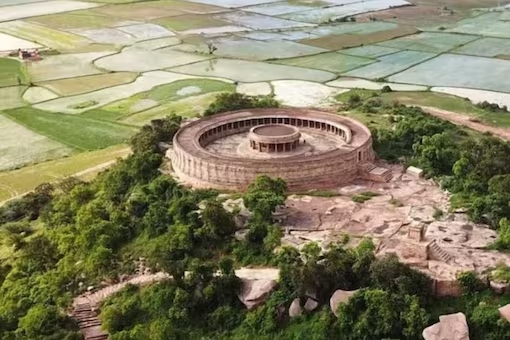The Indian Parliament has now been shifted from the circular Lutyens building to the mammoth lion-capitol-topped triangular edifice on Central Vista. Prime Minister Narendra Modi and other politicians have paid tribute to the old parliament building recently. The building will now be called Samvidhan Bhavan. Did you know many claim that the old parliament building’s architecture was inspired by the Chausath Yogini temple in Madhya Pradesh? They have made this claim citing the circular shape of both buildings. The Chausath Yogini temple is dedicated to Lord Shiva and is located in the desolate Chambal Valley in Madhya Pradesh’s Bhind-Morena region. The hilltop temple in Mitaoli village, around 40 kilometres from Gwalior, is believed to have been commissioned during the reign of King Devpal.
The architectural shape of the temple is generally square or rectangular. Chausath Yogini temple is an exception to this rule and is circular in shape. The temple is also said to be dedicated primarily to the 64 yoginis apart from Lord Shiva. The yoginis are also said to symbolise the 64 kalas or arts. The yoginis are also said to be powerful warriors and sorceresses. It is believed that the 64 rooms designed in this temple are especially for the yoginis. This temple is built around a circumference of 170 feet and also has a panel system with holes to drain the rainwater.
Architects Edwin Lutyens and Herbert Baker had designed the old parliament building. They have considered in mind a blend of Roman and Indian architecture while planning this building. It was used for consulting and making decisions related to the administration during the British regime. The old parliament building comprised 144 cream sandstone pillars, each of which measured 27 feet. At that time, the total cost of construction was Rs 83 lakh. It was the hard work of the Indian workers that finally brought the Parliament building into existence. The circular central chamber, located at the centre of the building, took 5 years to build, and there are 3 semi-circular halls around this building. These halls were used as chambers of councils of state and parliament.


